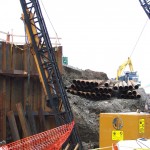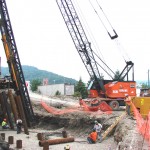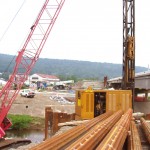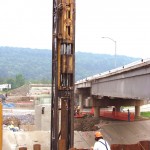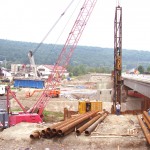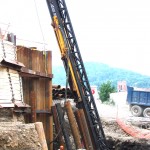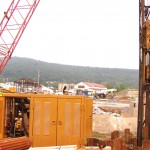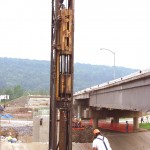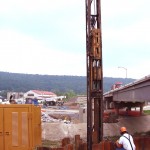J&M Hydraulic Hammers Make PennDOT Debut
Traditionally, the Pennsylvania Department of Transportation has been very rigid with their pile driving criteria, with 20 blows to the inch standard regardless of the pile type or size.
With half of the bridges on the US Route 219 reconstruction in Bradford, PA designed on Monotubes, which cannot take the stresses of high blowcounts, the contractor enlisted the help of GRL. Together they approached PennDOT with a driving system using WEAP Analysis to show they could achieve the required bearing at less than 20 blows per inch, which would prevent overstressing the Monotubes.
The contractor submitted several J&M hydraulic hammers for approval and PennDOT accepted both the J&M Model 82 that they own, with a 8,200 lb ram rated at 32,800 ft/lbs as well as the J&M Model 70B, with a 7,000lbs ram rated at 21,000 ft/lbs.
APE/J&M supplied 2 rental 70B’s in addition to the contractor owned Model 82. Because the hydraulic hammers have an infinitely adjustable stroke inbetween the minumum and maximum, dynamic testing was used on all hammers to determine the optimal hammer stroke. This testing confirmed that the bearing was achievable at something other than 20 blows per inch, in this case 10 blows per inch, which enabled the contractor to drive the Monotubes without fear of destroying them because at 10 blows per inch, the compressive stresses were comfortably below the yield of the Monotube’s steel.
This is the 1st time a hydraulic hammer has been used on a PennDOT project. We look forward to many more.







